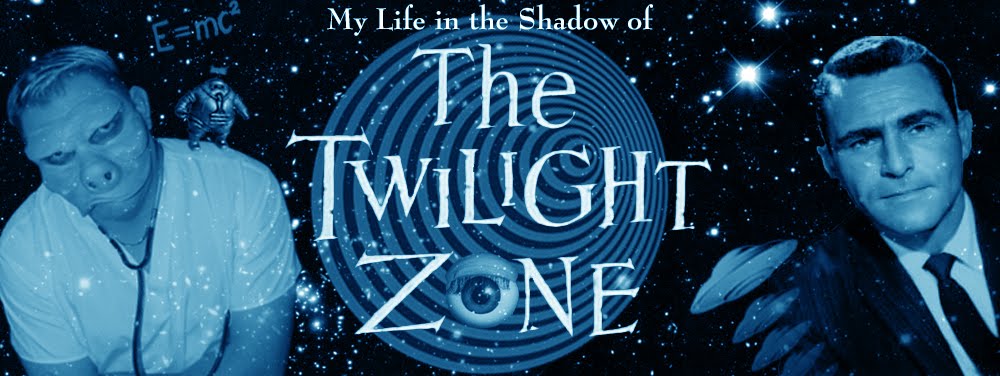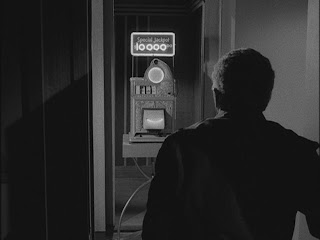Franklin Gibbs is a sour, unpleasant man with few (if any) redeeming character traits. His wife Flora wins a trip for two to Las Vegas and, upon their arrival, proceeds to ruin the trip with his endless bitching and complaining. Staunchly against gambling (or spending money on anything frivolous), he nonetheless finds himself falling victim to… the fever. A battle of wills ensues between Gibbs and a particularly aggressive slot machine, one that seems to literally call his name….
The casting is spot-on. Everett Sloane stars as Gibbs, who somehow creates an even more unpleasant character than Walter Ramsey, the CEO from hell in Serling's Patterns, a Kraft Television Theater script from 1956 (for which Sloane was nominated for an Emmy). Vivi Janiss is marvelous as Gibbs' eternally suffering wife, Flora. As for the third character in the story….
…well, it's the scariest one-armed bandit I've ever seen. I visited Las Vegas for the first time five years ago, and was disappointed to discover that there were no actual slot machines anywhere. Everything's computerized, with push buttons instead of those tactile pull-arms. It just ain't the same.
The Fever is written by Rod Serling, directed by Robert Florey, and shot by George T. Clemens. The music is a "stock score" affair (explained last week), but the majority of the music is derived from two different CBS Music Library pieces, one by Jerry Goldsmith, and another by Rene Garriguenc. Both suites were first released in 1984 by Varese Sarabande on the LP The Twilight Zone: Volume 4, under the titles "Jazz Theme One" and "Jazz Theme Two," respectively. Both appeared later on CD in 1999 as part of Silva's The Twilight Zone 40th Anniversary collection, but this time Garriguenc's piece was retitled "Jazz Theme Three" (apparently to accommodate a second jazz suite by Jerry Goldsmith, which did NOT appear on the original Varese Sarabande LP, but WAS included on the Japanese-only CD release of that album). For the record, the Garriguenc piece is called "Street Moods in Jazz," and would also be used in later TZ episodes such as "The Chaser" and "The Prime Mover."
The Fever isn't one of my favorites, but it's certainly worth a look. Even grade-B Zone is better than most TV. Christ, for that matter, even grade-D Zone is better than most TV. Make no mistake: The Twilight Zone did have its share of bad episodes ("turkeys," as Serling called them). But we'll get to those in due time, and thankfully not for a while….
Next week: A WWI pilot lands… well, someplace he never thought possible. Book a flight and check it out.
























